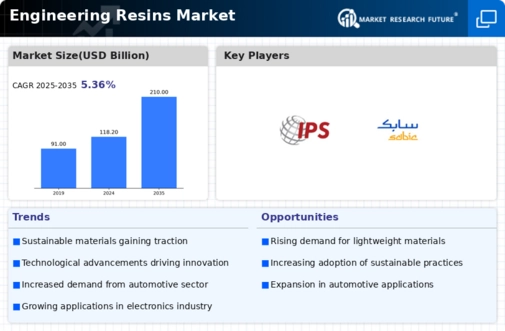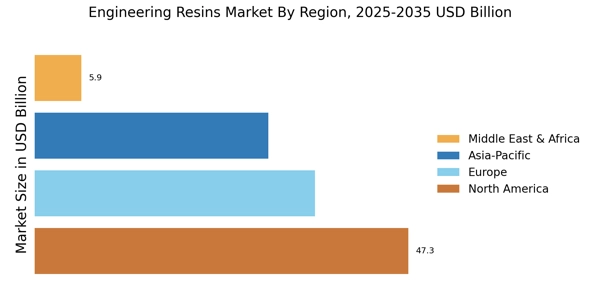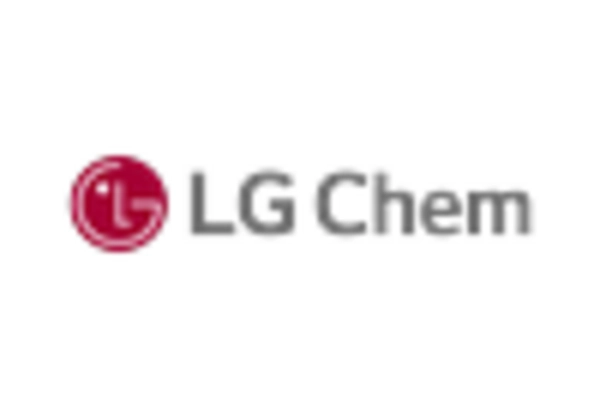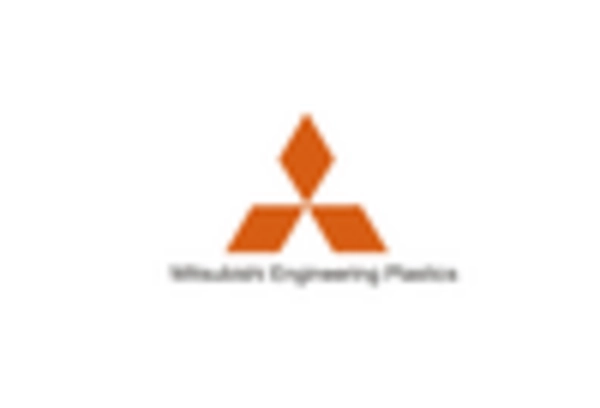Leading market players are investing heavily in research and development to expand their product lines, which will help the Engineering Resins Market, grow even more. Market participants are also undertaking a variety of strategic activities to expand their footprint, with important market developments including new product launches, contractual agreements, mergers and acquisitions, higher investments, and collaboration with other organizations. To expand and survive in a more competitive and rising market climate, the Engineering Resins industry must offer cost-effective items.
Manufacturing locally to minimize operational costs is one of the key business tactics used by manufacturers in the Engineering Resins industry to benefit clients and increase the market sector. In recent years, the Engineering Resins industry has offered some of the most significant advantages to the manufacturing and materials sector, including enhanced product performance, lightweight solutions, and environmentally sustainable materials. Major players in the Engineering Resins Market, including ARKEMA GROUP, BASF S.E., E.I. Dupont de Numeours and Company, Honeywell International Inc, Innovative Plastics, LG Chemicals, Mitsubishi Chemical Corporation, SABIC, Solvay SA, Sumitomo Chemical Co.
Ltd. are attempting to increase market demand by investing in research and development operations.
BASF SE is a prominent chemical company engaged in the production, marketing, and sales of a diverse range of products, including chemicals, plastics, crop protection solutions, and performance products. Its extensive product portfolio encompasses items like solvents, adhesives, surfactants, fuel additives, electronic chemicals, pigments, paints, food additives, fungicides, and herbicides. BASF serves multiple industries, such as construction, furniture, agriculture, electronics, automotive, paints and coatings, and more. The company actively collaborates on research and development initiatives with customers, scientists, and partners. BASF operates a network of manufacturing facilities and maintains a strong presence in various regions around the world.
Its headquarters are located in Ludwigshafen, Germany.
Mitsubishi Chemical Group Corp (MCGC), formerly known as Mitsubishi Chemical Holdings Corp, is a diversified chemical company offering a wide array of products and services. These encompass advanced polymers, high-performance chemicals, high-performance films, advanced moldings and composites, petrochemicals, carbon-related products, industrial gases, methyl methacrylate, and solutions focused on environmental and daily living needs. MCGC also provides ethical pharmaceuticals, diagnostic reagents and instruments, capsules and pharmaceutical equipment, active pharmaceutical ingredients and intermediates, and self-health check services.
The company caters to various sectors, including mobility, environmental and new energy initiatives, information technology, electronics and displays, medical applications, food and bioproducts, packaging, labels, and films, as well as healthcare solutions. MCGC maintains a presence with operations spanning Europe, Africa, Asia-Pacific, North America, and Latin America. Its headquarters are situated in Chiyoda-Ku, Tokyo, Japan.


















Leave a Comment